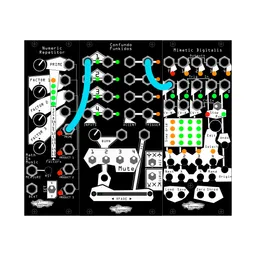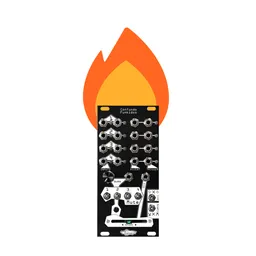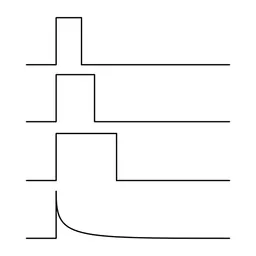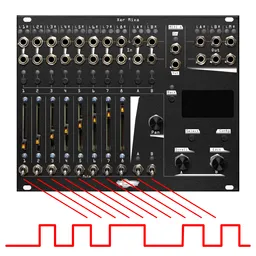I think a lot about envelopes.
Why, you may ask? Well, that’s a good question.
The first reason is that, when it comes to creating a sound, the shape and response of the envelopes used is just as important as the type of oscillator or processing, in my opinion. We talked about this in our introductory post on envelope generators, so if you are still a little unclear on what envelopes are and how we use them in modular, you might start there.
The second reason is that I am an undeniably gigantic nerd. [Ed. note: true story.]
One thing that’s always frustrated me with standard envelopes is that they generally don’t respond dynamically. This is why I love my Natural Gate and Minimod Contour Generators: their envelopes actually respond differently depending on the sequence of gates you play into them. That’s also why we designed the Sinc Bucina to have a dynamic trigger input: it responds differently depending on the voltage of the trigger you send it, which adds a really interesting layer of expression.
I was a pianist long before I started using synthesizers, and I’ve always been fascinated by how pianos respond to key presses. I like this example because it’s pretty relatable: almost everyone has pressed a piano key at some point in their life. At first glance, you may think of them as following the same dynamic structure as an ADSR envelope, but they don’t quite: if you hold a piano key down long enough, it’ll go completely silent, which is an interesting behavior not exemplified by a normal ADSR. Even if you set the sustain all the way down on an ADSR, many ADSRs won’t leave the decay stage and go to the release stage until the decay finishes. To fix that, we have to get a bit creative. For this patch, we need an ASR envelope (or a slew), a decay envelope, and a DC-coupled VCA that can process CV.
Note that while this envelope patch is based on the dynamics of a piano, it’s fantastic for emulating electric basses and other plucked instruments, and it’s also just a fantastic flavor of envelope to try out for pretty much any type of sound.
The patch
This patch is simple: run the decay envelope through the VCA, control the VCA with the ASR envelope, and trigger both envelopes with the same gate. You want a long decay time on the decay envelope, and short attack and release times on the ASR. Simple, sounds good, AND it doesn’t even take that many modules! That’s my favorite kind of patch.

I found that instead of using multiple separate envelopes like I do in most of my patches, I got the best results by multing and separately attenuating this envelope to multiple destinations with something like Sinc Defero, or, in this case, Lapsus Os.
Going even further
Our envelope already responds to time: how long you hold the note down changes its dynamics. We can go even further with this, though: if we’re using either a keyboard with a velocity output or a sequencer with an extra CV output, we can also make it respond to that in terms of peak volume for each note. It’s as simple as adding another VCA: run your ASR through a VCA before patching it to the other VCA. That’s a lot of VCAs, but it makes for an extremely responsive patch. If you’re a keys player like me (or if you just really like dynamics!) that makes a big difference.
While I presented this as a way to emulate real-world instruments, don’t let that limit your sound: dynamics and responsiveness are something that, in my opinion, are often left out of the creation of sounds when using synthesizers. You could have the gnarliest tone on the planet coming out of a Loquelic Iteritas, but if you controlled and modulated it with a really dynamic envelope like this, it could make it sound much more natural, and make it much more fun to work with. Taking inspiration from characteristics of real-world sounds and applying them to completely synthetic things is one of my favorite techniques for making “convincing” sounds -- that is, sounds that could be real instruments, but don’t sound like anything we’ve heard before.






